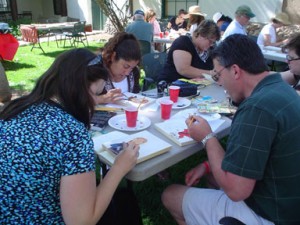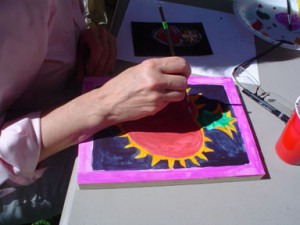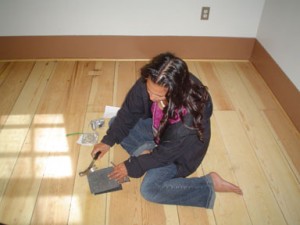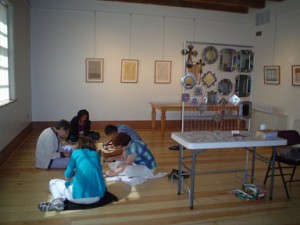“Place is more than a museum. Place is more than stuff in a case. Place is an experience that is shared through connections with people over time.
With that, Erica Garcia, chief educator at the New Mexico History Museum, today began one of what will become many lessons for 40 kindergarten-through-high-school teachers. Gathered from across the nation at the museum this week (like a similar group last week), the teachers are studying the history and interactions between Native Americans and European settlers in a city where those peoples’ descendants still make history.
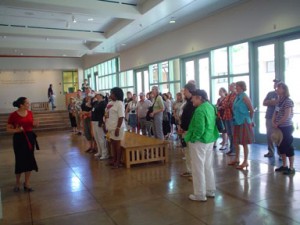
Erica Garcia (left) introduces teachers to the NM History Museum.
It’s also an education in how the settlement of America is not a story focused on familiar names like Jamestown and the Mayflower.
Contested Homelands: Knowledge, History, and Culture of Historic Santa Fe is a special program offered at the museum by the University of New Mexico’s College of Education. Funded by a $160,000 grant from the National Endowment for the Humanities, Contested Homelands consists of two weeklong workshops held at the museum, with field trips around Santa Fe and Taos.
“Getting a chance to learn about New Mexico’s history in a place that saw so much of it makes this workshop unique,” Garcia said. “The Palace of the Governors is a living testament to the resiliency of New Mexico’s people and cultures. You can tell people about the history, but something special happens when they stand in its footprint.”
Contested Homelands aims to strengthen the teachers’ knowledge of pre-colonial America and stretch their understanding about the scope of European Colonial America – a topic that too often is taught as an east-to-west migration, overlooking the contemporaneous movements of Spanish colonists from south to north. Besides hearing distinguished scholars discuss topics ranging from historic sites to El Camino Real, participants get to try their hands at cultural creation, hammering out tinwork and designing their own retablos.
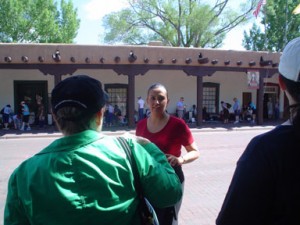
Garcia talks about the design of the Palace of the Governors during a walk around the Santa Fe Plaza.
As this week’s session began, Garcia led the teachers on a tour of the Santa Fe Plaza and the Palace of the Governors. Standing at the corners of Lincoln Avenue and San Francisco Street, she noted that the corner, once the terminus of El Camino Real, is now “a great place to get ice cream.” Moving down the sidewalk to the corner of Old Santa Fe Trail and San Francisco Street, she told the teachers they had just reached the end of the Santa Fe Trail.
The Plaza that connects the trails, she said, has been the heart of Santa Fe life for four centures, with wedding, executions, protest rallies, military enlistments and, just this weekend, a few nude cyclists.
Sprinkled in were stories of the Spanish colonization and its harsh encomienda system that led to the Pueblo Revolt; the technology of building with mud; and a nod to the Palace’s uniquely colonial security system: Anyone intending to storm the place was forced to simultaneously stoop through a low door while stepping up, thereby making themselves a slower and better target of inhabitants.
This week’s teachers hail from places as far from one another as Maine and Oregon, with Iowa, Chicago, the Carolinas, New Jersey, New York and San Antonio thrown in.
Among the questions participants will ponder: What are homelands? How do homelands stretch, shrink and shift over time? What happens when homelands overlap with one another? How does (perpetual) colonization, conquering, and resistance transform homelands and create new ones? What is the spiritual story of a homeland? How do the artistic products and structures of a homeland tell a story? What connections do people have to a homeland and how are these connections manifested in history and in present-day? And importantly, for the purpose of this workshop, how do the Camino Real and the Palace of the Governors exemplify the unfolding of homeland in an area that already had a vibrant system of Pueblo communities prior to European Settlement?
Using what they learn, the teachers will leave the workshop with something they can use in their classrooms – a lesson, a Power Point Presentation, an informational booklet to share with their students, a lecture.
Besides UNM and the museum, the program received support from the Office of the State Historian, Spanish Colonial Arts Society, Wells Fargo Bank, Albuquerque Historical Society, New Mexico Humanities Council, New Mexico Council for the Social Studies, National Geographic, La Montañita Coop, Dr. Thomas Keyes, Dr. Quincy Spuirlin, Dr. Rebecca Sánchez and Albert and Christine Sánchez.
While the workshops coincide with Santa Fe’s 400th anniversary, they make the point that the area’s history stretches centuries before that.
“Vibrant communities flourished in this place long before European exploration and later settlement,” Assistant Professor Rebecca Sánchez told UNM Today. “ As this region moved toward statehood, the United States inherited the memory and material creations of the region. When it became part of the U.S., the country had to incorporate this history into the national narrative of American history. The place is itself a homeland with a larger story.”
The NEH’s “Edsitement” arm has also selected Santa Fe for this month’s virtual excursion, an online opportunity for teachers and, really, anyone to learn more about this place where so many trails converged.
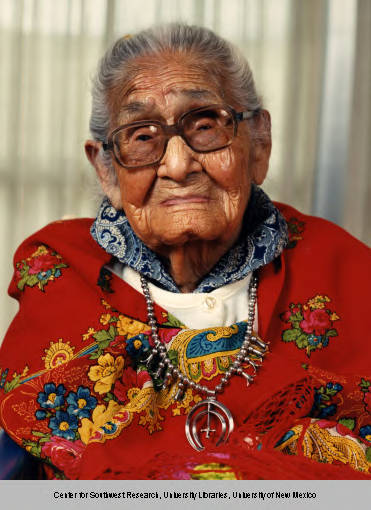

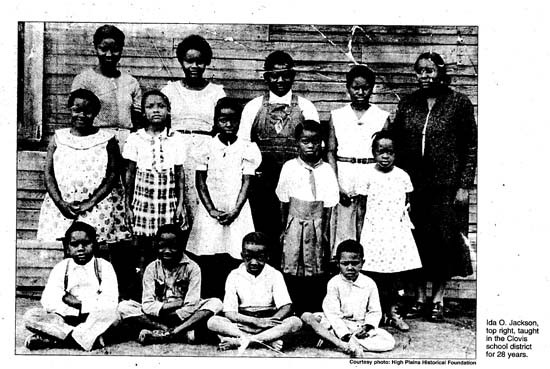
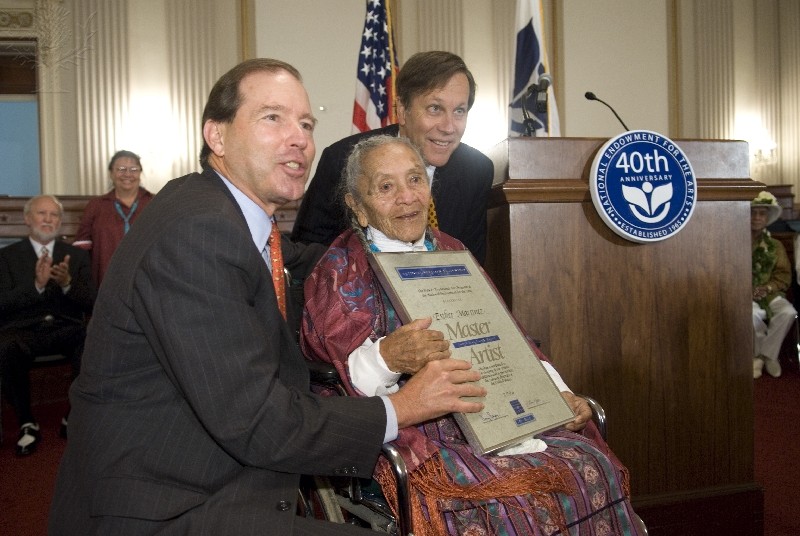
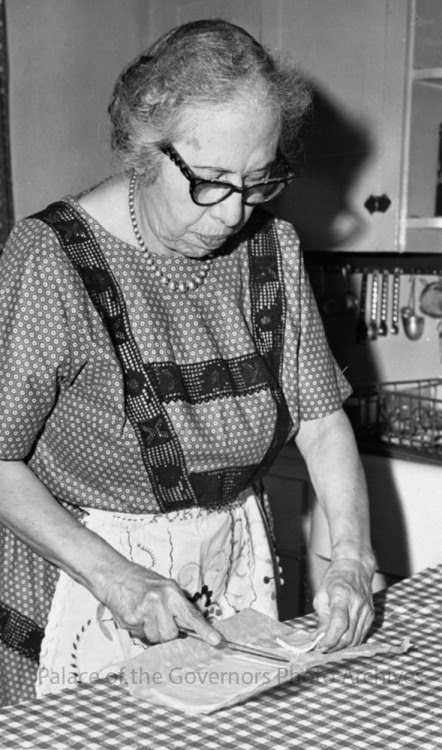
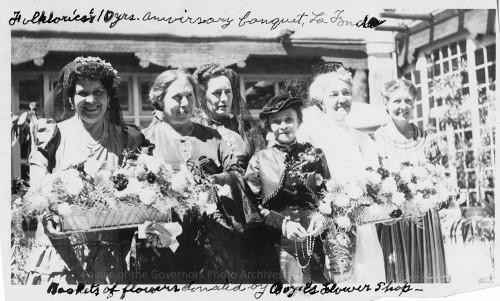
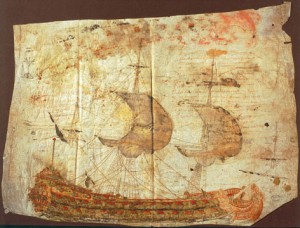
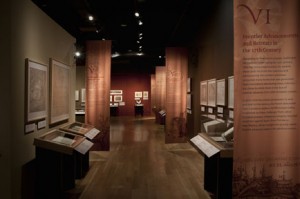 With the able help of UNM professors (Rebecca Sanchez, Mercedes Valenzuela and Ron Taylor) , the History Museum is proud to announce
With the able help of UNM professors (Rebecca Sanchez, Mercedes Valenzuela and Ron Taylor) , the History Museum is proud to announce 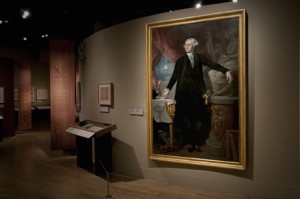 Many of us were taught how important France’s aid was to achieving U.S. independence, but far fewer know that Spain’s financial aid essentially underwrote the American Revolution.
Many of us were taught how important France’s aid was to achieving U.S. independence, but far fewer know that Spain’s financial aid essentially underwrote the American Revolution. Tom Leech and James Bourland, the keepers of the Press, happily agreed and turned their “office” into a working classroom for the students.
Tom Leech and James Bourland, the keepers of the Press, happily agreed and turned their “office” into a working classroom for the students. “Together they composed two poems, one in English, the other in Spanish, an illustration of Obama as a calavera (skeleton), and as a class we designed a broadside,” Nathan said. “At the Palace of the Governors Print Shop, their poem was hand-set in lead type, a linoleum block was carved and several hundred broadsides were printed.”
“Together they composed two poems, one in English, the other in Spanish, an illustration of Obama as a calavera (skeleton), and as a class we designed a broadside,” Nathan said. “At the Palace of the Governors Print Shop, their poem was hand-set in lead type, a linoleum block was carved and several hundred broadsides were printed.”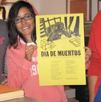 “It’s a broadside for centavos, Posada’s tradition come to life, not to mention a huge celebration for
“It’s a broadside for centavos, Posada’s tradition come to life, not to mention a huge celebration for 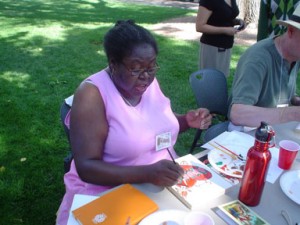 The Palace Courtyard was cool, with a reasonable amount of shade this morning — a far cry from the lightning storm predicted for later today. A perfect time, in short, to try out a little plein air painting, New Mexico-style. The teachers participating in this week’s
The Palace Courtyard was cool, with a reasonable amount of shade this morning — a far cry from the lightning storm predicted for later today. A perfect time, in short, to try out a little plein air painting, New Mexico-style. The teachers participating in this week’s 